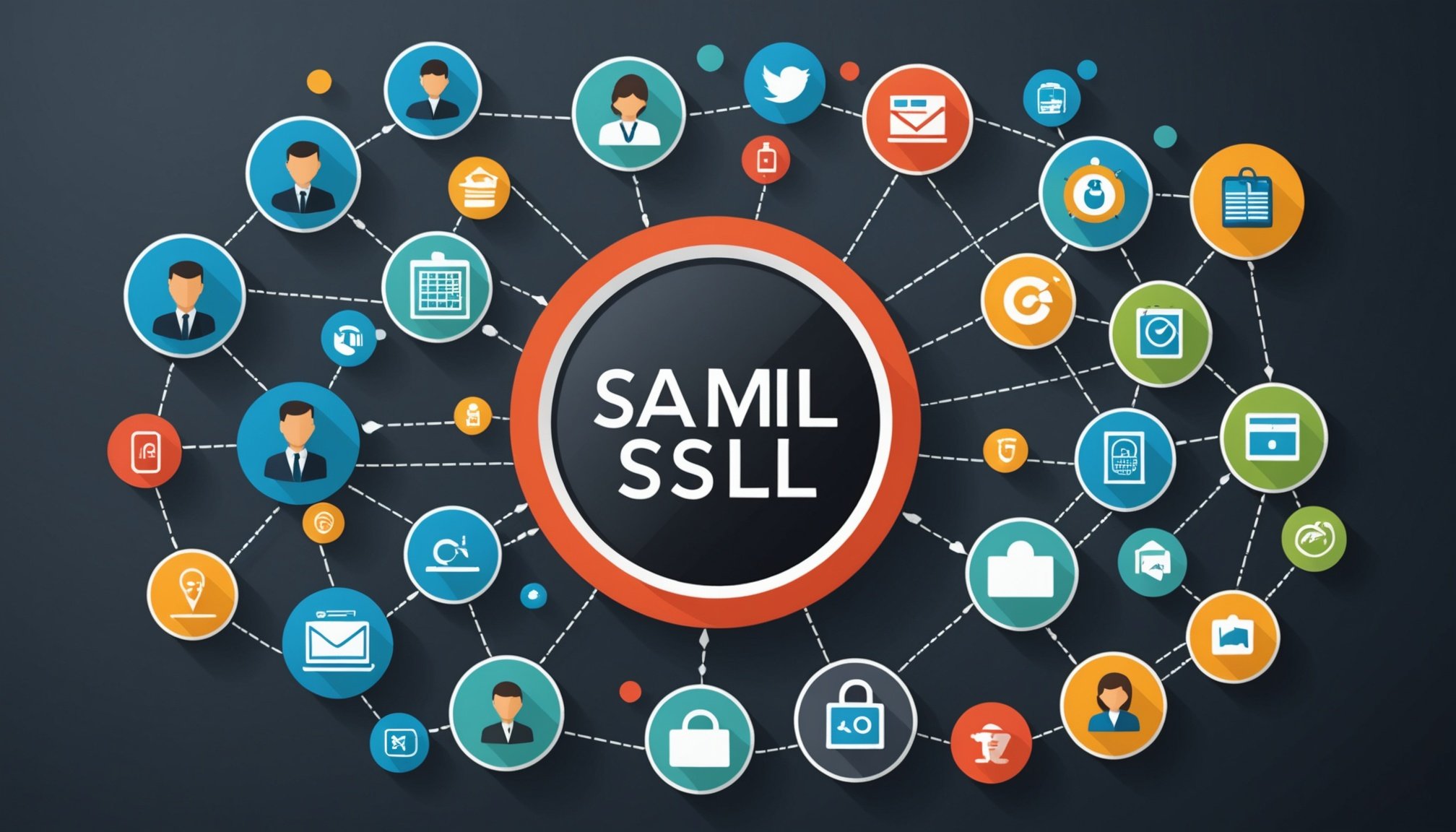Understanding Single Sign-On (SSO) and SAML
Single Sign-On (SSO) is a user authentication process that allows individuals to access multiple applications with one set of login credentials. The main advantage of Single Sign-On is that users do not need to remember multiple passwords, reducing password fatigue and eliminating the need for multiple logins. This streamlines user experience and improves productivity by minimizing interruptions caused by password resets.
Security Assertion Markup Language (SAML) plays a crucial role in enabling SSO by facilitating the exchange of authentication and authorization information between different parties. SAML functions as a standard protocol, ensuring seamless interoperability between identity providers and service providers. By using SAML, organizations can enhance security measures as it decreases the risk of password theft and phishing attacks.
Also to see : Boosting mysql query efficiency: proven techniques for optimizing performance
The integration of SSO solutions with SAML in a secure environment offers numerous benefits:
- Simplifies user management and improves access control.
- Enhances security by allowing centralized authentication.
- Provides comprehensive logging and monitoring capabilities for user activities.
Moreover, SSO solutions with SAML reduce administrative overhead, allowing IT departments to focus on core strategic objectives. Adopting these technologies ensures a secure, efficient, and user-friendly authentication process that caters to both organizational and user demands.
In the same genre : Key techniques for safeguarding docker secrets in your swarm environment
Key Security Considerations for SSO Implementation
Implementing SSO security is crucial for safeguarding user credentials and sensitive data. A robust security framework ensures that only authorised individuals gain access to information. To achieve this, start with strong authentication methods. Multi-factor authentication (MFA) is an effective practice in SSO security, combining something the user knows, has, or is, to substantiate their identity.
With Single Sign-On (SSO), using SAML security measures is imperative. Secure Assertion Markup Language (SAML) provides authentication to applications, making it vital to protect these assertions. Encryption techniques such as Transport Layer Security (TLS) encrypt SAML assertions during transmission. Encrypting data ensures it remains confidential and integral.
In addition to encryption, consider best practices for SSO security, like regularly updating and patching systems. Consistent update cycles close vulnerabilities. Also, employ secure coding standards to eliminate common security flaws. Monitoring is another essential component. Continuous monitoring of SSO systems helps detect and respond to potential threats promptly.
By focusing on these measures, organisations can create a secure SSO environment that protects user information and aids in reducing security risks effectively.
Steps to Implement SSO with SAML
Implementing Single Sign-On (SSO) with SAML involves several important steps to ensure seamless access across multiple applications, enhancing both security and user experience. In this section, we’ll explore the essential stages involved in successful SSO implementation.
Planning Your SSO Implementation
A well-structured plan is crucial for a successful SSO implementation. Begin by identifying your organization’s unique requirements. Consider user demographics, security needs, and potential integration challenges. It’s advisable to involve cross-functional teams to gather diverse insights. Establish clear objectives and outline the desired outcomes of your SAML setup. This collaborative approach leads to a more comprehensive deployment strategy.
Configuring SAML Identity Providers
Configuring identity providers is central to your SAML setup. Select a suitable identity provider that aligns with your organization’s preferences. Configure settings such as user authentication protocols and token attributes. Thoroughly test configurations to ensure compatibility. A well-configured identity provider will serve as the backbone of your SSO implementation, facilitating secure and efficient user logins.
Setting Up Service Providers
Integration is the final piece in your SSO implementation puzzle. Identify compatible service providers and establish connections to the identity provider. During this step, ensure that necessary security protocols are in place to protect data exchange during authentication. Proper integration guarantees users seamless access to applications, minimizing disruptions and optimizing workflow efficiency.
Common Pitfalls to Avoid
Implementing Single Sign-On (SSO) systems can be transformative for user experience, but avoiding common pitfalls is crucial. One of the most significant SSO challenges is the underestimation of potential errors during implementation. This often leads to a cascade of issues, starting from unreliable user authentication to potential security breaches. When deploying SAML-based solutions, understanding the nuances of the protocol is essential to avert these mishaps.
A frequent error in SSO implementation is insufficient testing. Testing is not just a phase but a continuous process to ensure systems remain robust over time. Without rigorous testing, unforeseen bugs can compromise system integrity.
Troubleshooting practices are often overlooked, too. Ignoring these practices can lead to recurring issues, damaging user trust and necessitating costly retroactive solutions. Therefore, setting up appropriate logging mechanisms can significantly simplify the identification and resolution of issues.
From the user experience side, complexities in the authentication flow can confuse users, leading to dissatisfaction and increased support requests. To improve user experience, prioritize clear communication, intuitive designs, and regular updates to address concerns proactively. Proper attention to these details can result in seamless and secure SSO deployments, enhancing both functionality and user satisfaction.
Tools and Frameworks for SSO with SAML
Single Sign-On (SSO) technologies play a vital role in identity management solutions, ensuring user efficiency and security. To deploy effective SSO with SAML frameworks, various tools and criteria must be evaluated to select the best fit for business requirements.
Popular SSO Tools Overview
SSO tools, like Okta, OneLogin, and Auth0, stand out by providing seamless integration capabilities across multiple platforms. They offer intuitive user interfaces and robust security measures. Their ability to manage thousands of user identities efficiently makes them highly valuable for large enterprises. Key features include centralized user portals and multi-factor authentication, emphasizing user convenience and security.
Frameworks Supporting SAML
SAML frameworks such as Shibboleth and SimpleSAMLphp offer comprehensive solutions to facilitate SSO implementation. These frameworks allow for robust authentication processes and support a wide range of protocols, enhancing the security and scalability of identity management solutions. They are widely adopted due to their compatibility with various service providers.
Evaluation Criteria for Tools
When evaluating tools for SSO deployment, consider the following factors:
- Compatibility with existing IT infrastructure.
- Ease of integration and user adoption.
- Cost-effectiveness relative to features offered.
- Level of support and documentation provided.
Each factor plays a significant role in ensuring the successful implementation and long-term viability of SSO systems using SAML.
Real-World Case Studies
In analysing SSO success stories across a spectrum of industries, it’s evident that harnessing SAML can be transformative. For instance, a prominent financial institution leveraged SAML to streamline its authentication processes, leading to reduced login times and enhanced security. This SAML implementation example demonstrates the importance of integrating SAML with existing IT frameworks to maximise efficiency.
Lessons learned from these deployments are as critical as the successes themselves. Many organizations faced challenges, particularly with compatibility issues and legacy systems. The tech sector provides a compelling example: a global tech firm struggled initially but overcame hurdles by investing in robust employee training and phased integration.
Key takeaways from these case studies underscore the value of anticipating challenges. They emphasise the importance of comprehensive pre-implementation audits and stakeholder collaboration. By learning from these examples, organisations can better prepare for their SSO journey.
This analysis suggests that understanding the specific requirements and being proactive in addressing potential obstacles is vital for a successful SAML implementation. It solidifies the case for investing in meticulous planning and strategic execution to harness the full potential of Single Sign-On technology.
Benefits of Secure SSO Solutions
Implementing secure Single Sign-On (SSO) solutions brings numerous advantages to both users and organizations. One significant benefit is the improvement in user experience. With SSO, users can access multiple applications with a single set of credentials, reducing the hassle of remembering multiple passwords. This simplification not only enhances productivity by allowing users to seamlessly navigate between platforms but also decreases login-related frustrations.
Security enhancements are another critical advantage offered by SSO. By centralizing authentication management, organizations can better protect user credentials and streamline access control. This approach reduces the risk of credential theft, as users enter their credentials fewer times, minimizing opportunities for attacks such as phishing. Additionally, centralized security policies can be enforced consistently across all applications, further fortifying the organization’s overall security posture.
The cohesive integration of user experience and security through SSO advantages makes it an appealing solution for many businesses. By reducing login friction and enhancing security, secure SSO solutions cater to both user satisfaction and organizational security requirements, ultimately fostering a more protected and efficient environment.






